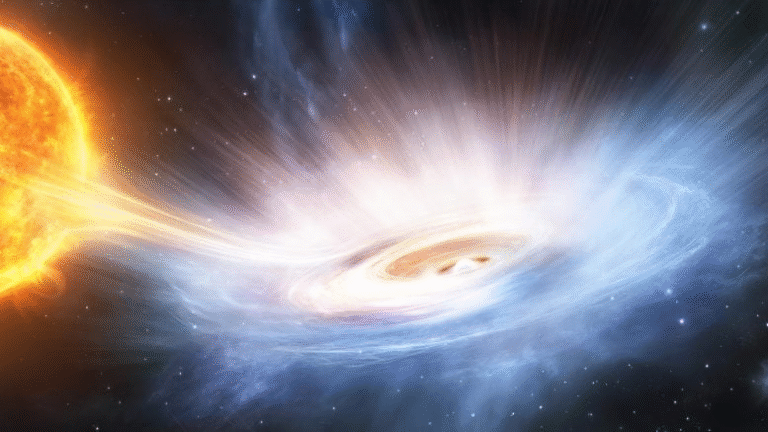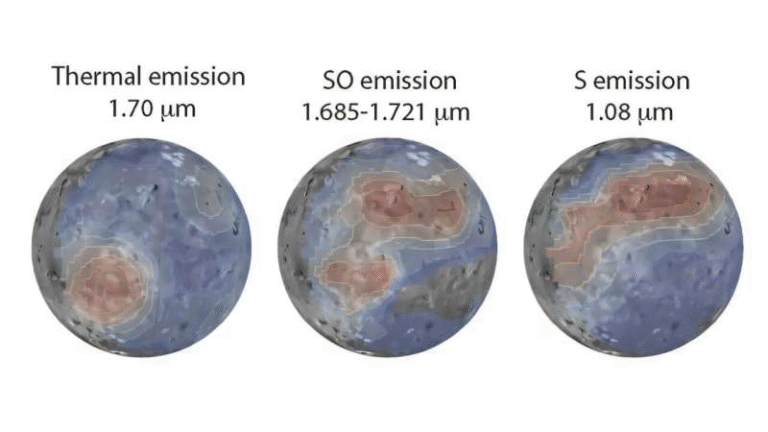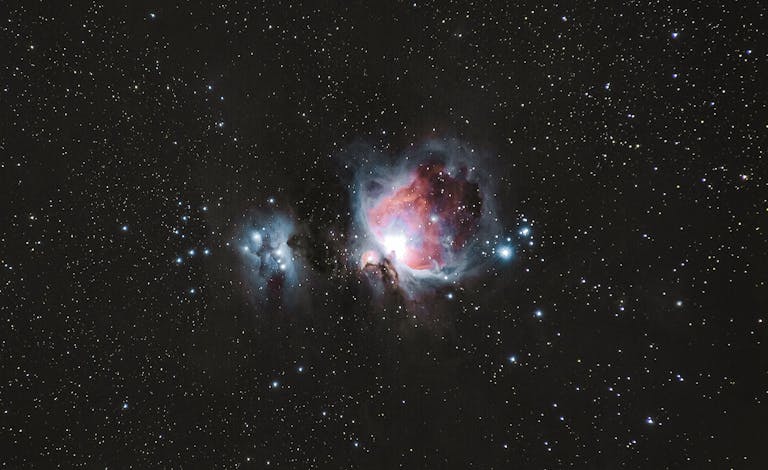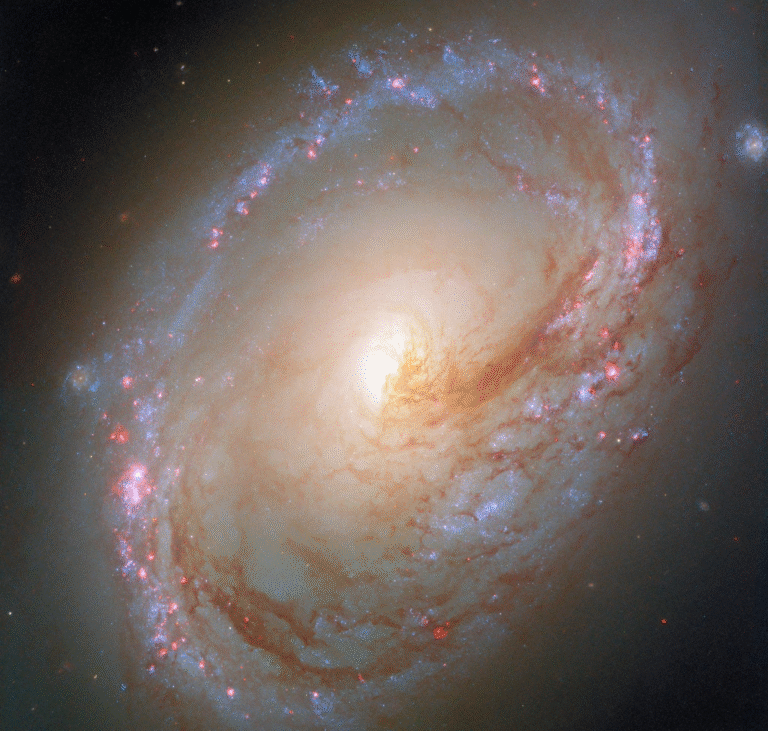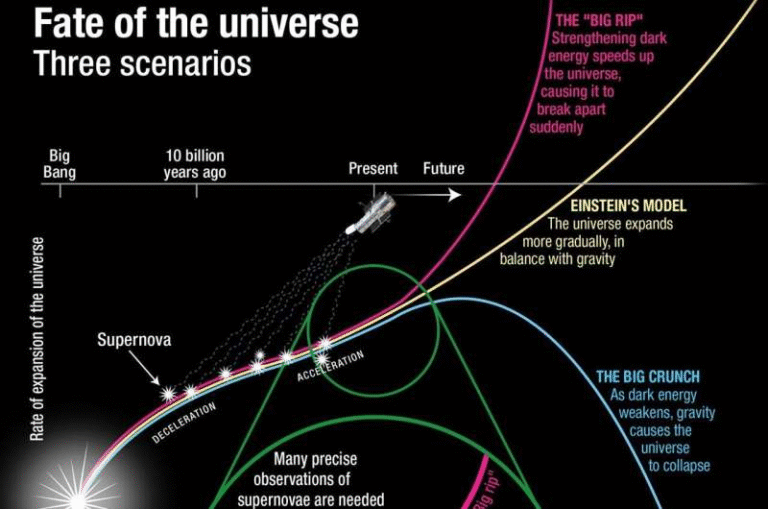Astronomers Discover a Double-Ringed Giant in Deep Space: The Most Distant and Powerful Odd Radio Circle Ever Found

Astronomers have uncovered an enormous, double-ringed radio structure billions of light-years away, and it’s unlike anything seen before. Known as RAD J131346.9+500320, this newly identified cosmic object is now officially the most distant and most powerful Odd Radio Circle (ORC) known to science. The discovery has stunned astronomers, challenged existing theories about black holes and galactic winds, and revealed how citizen scientists can play a major role in exploring the universe.
What Exactly Is an Odd Radio Circle?
Odd Radio Circles, or ORCs, are mysterious, faint rings of radio emission that appear to surround distant galaxies. They don’t show up in visible light or X-rays—only in radio wavelengths, which means you need specialized radio telescopes to detect them. ORCs are vast structures, often 10 to 20 times larger than the Milky Way, and their origins are still being debated.
The first ORC was discovered only about six years ago, making them one of the newest and strangest astronomical phenomena. Each one is essentially a ring of magnetized plasma, moving through space at incredible speeds. The radio glow we detect comes from synchrotron radiation—a type of light produced when charged particles spiral through magnetic fields at near-light speeds.
Scientists have long speculated that ORCs might form when supermassive black holes eject energy in bursts, or when galaxies collide, creating gigantic shockwaves in intergalactic space. But the newest discovery suggests something even more intriguing might be at play.
The Discovery of RAD J131346.9+500320
The source designated RAD J131346.9+500320 was found by a team of astronomers working with RAD@home, an Indian citizen-science initiative that invites volunteers to analyze astronomical data. Working alongside professionals from the University of Mumbai, participants used data from the Low-Frequency Array (LOFAR)—a pan-European radio telescope network that observes the universe at frequencies between 10 and 240 MHz.
LOFAR’s incredible sensitivity allowed the team to spot this extremely faint, ring-shaped object. Located at a redshift of approximately 0.94, the ORC appears as it was when the universe was roughly half its current age. In cosmic terms, that’s about 7 billion years ago. This makes it the most distant and most powerful ORC ever recorded.
What really makes RAD J131346.9+500320 stand out is that it’s not just one ring—it’s two intersecting rings, forming a double-ringed structure. Only one other ORC with this kind of geometry has ever been seen. The two rings each span about 300 kiloparsecs (kpc) across, while the surrounding diffuse emission extends nearly 800 kpc—that’s about 2.6 million light-years from edge to edge.
The ORC emits a steep radio spectrum with a spectral index of about 1.22 ± 0.15, indicating that the emission is from relic or aged plasma—the fading afterglow of once-powerful energy jets. Its total radio luminosity at 144 MHz is an astonishing 2.27 × 10²⁶ W Hz⁻¹, making it one of the most energetic objects of its kind ever detected.
A Citizen Science Triumph
This discovery is particularly remarkable because it marks the first ORC ever identified by citizen scientists, and the first found using LOFAR data. The RAD@home Astronomy Collaboratory, founded in India, empowers trained volunteers to inspect complex radio sky images, often spotting unusual shapes or patterns that automated software can miss.
This collaboration between amateurs and professionals shows how human pattern recognition—something still hard for AI to replicate—remains crucial in scientific discovery. The project demonstrates that anyone with curiosity and dedication can help uncover the universe’s hidden wonders.
A Family of Enormous Cosmic Rings
RAD J131346.9+500320 wasn’t the only exciting find in this research. The same team also identified two other enormous radio galaxies with strange, ring-like features.
- RAD J122622.6+640622 — This object spans roughly 865 kiloparsecs (almost 3 million light-years), making it more than 25 times the diameter of the Milky Way. One of its jets sharply bends before forming a 100 kpc-wide ring of radio emission. The sudden deflection suggests it may have collided or interacted with dense external gas.
- RAD J142004.0+621715 — About 440 kiloparsecs across, this galaxy shows a ring at the end of one jet, while another thinner jet shoots out in the opposite direction. The symmetry and energy involved suggest powerful interactions between the galaxy’s outflows and the surrounding environment.
All three galaxies, including the double-ringed ORC, reside in massive galaxy clusters weighing around 100 trillion solar masses. These clusters are filled with extremely hot plasma, millions of degrees in temperature. As the jets from the galaxies interact with this material, they likely produce shock fronts and magnetic turbulence, sculpting the intricate ring shapes we see.
What Might Be Causing These Rings?
The discovery challenges older theories that explained ORCs as the remnants of black hole explosions or galaxy collisions. The new study proposes an alternative: superwinds.
Superwinds are colossal outflows of charged particles driven by intense star formation and black hole activity within a galaxy. These winds can blast through interstellar and intergalactic space, carrying magnetic fields and high-energy plasma with them. When they expand into surrounding gas, they can form radio-emitting shock shells—visible to radio telescopes as ring-like structures.
In the case of RAD J131346.9+500320, the researchers suggest that a spiral host galaxy might have produced these double rings through successive outflows or interactions between ancient and newer winds. The steep radio spectrum fits this idea, implying that the object is a relic, no longer powered by active jets but still glowing faintly from the energy released long ago.
At the same time, the environment around these galaxies—dense with hot cluster gas—probably influences how the rings form and evolve. Interactions between relativistic plasma jets and external pressure gradients could cause the bending and shaping observed in the companion objects.
The double-ring geometry might indicate two separate events or outflows, possibly observed at different stages of their evolution, or even viewed at a unique angle that reveals overlapping circular shells.
Why This Discovery Matters
This discovery is far more than just an astronomical curiosity. It helps scientists probe some of the deepest questions about how galaxies and black holes co-evolve. By pushing the record for ORC distance and power, it offers a glimpse into how energetic galaxies behaved billions of years ago.
Studying ORCs allows astronomers to trace how magnetic fields and cosmic plasma behave on vast scales. Since RAD J131346.9+500320 existed when the universe was young, it also provides clues about how massive galaxies grew and interacted with their surroundings.
The sheer luminosity of this ORC implies that these objects might have been more common or more active in the early universe than we once thought. With only a few known examples so far, every new ORC adds a crucial piece to the puzzle.
The Role of Modern Radio Telescopes
The Low-Frequency Array (LOFAR) played a key role in this discovery. LOFAR isn’t a single telescope—it’s a network of hundreds of thousands of simple antennas spread across Europe, all linked to form a giant interferometer. It captures extremely faint, low-frequency radio waves that reveal the structure of ancient cosmic objects.
Because radio waves can travel through dust and gas that block visible light, LOFAR allows scientists to look back billions of years into regions otherwise hidden. With its unmatched sensitivity, it can pick up faint relic emissions from the early universe—signals from when galaxies were still forming and merging.
Looking Ahead: What’s Next for ORC Research?
The discovery of these cosmic rings is just the beginning. In the near future, even more powerful observatories will join the search. The upcoming Square Kilometre Array (SKA)—set to be the world’s largest radio telescope—will map the radio universe in unprecedented detail. It’s expected to uncover hundreds or even thousands of new ORCs, helping astronomers finally determine how they form.
At the same time, optical surveys like the Dark Energy Spectroscopic Instrument (DESI) and the Vera C. Rubin Observatory’s LSST will measure the redshifts and environments of ORC host galaxies. By combining radio and optical data, scientists will be able to piece together the full story of how these massive, glowing rings came to be.
Future studies will likely include polarization mapping, X-ray imaging of cluster gas, and spectral aging analysis to estimate when these structures formed. Each new layer of observation will bring us closer to understanding the forces that shape the largest plasma structures in the cosmos.
The Broader Picture: ORCs and Cosmic Evolution
The existence of ORCs opens up a fascinating window into how energy and matter circulate in the universe. These rings may represent a natural phase in the life cycle of galaxies—moments when supermassive black holes and starbursts combine to drive massive outflows that reshape their environments.
They also demonstrate how magnetism, plasma physics, and large-scale structure interact on cosmic scales. The combination of energetic jets, magnetic fields, and surrounding hot gas could produce many of the strange shapes astronomers now observe.
For the general public, ORCs are a reminder of how little we truly know about the universe. In a cosmos filled with galaxies, quasars, and nebulae, these newly discovered rings stand out as enigmatic beacons of ancient energy, whispering stories from billions of years ago.
